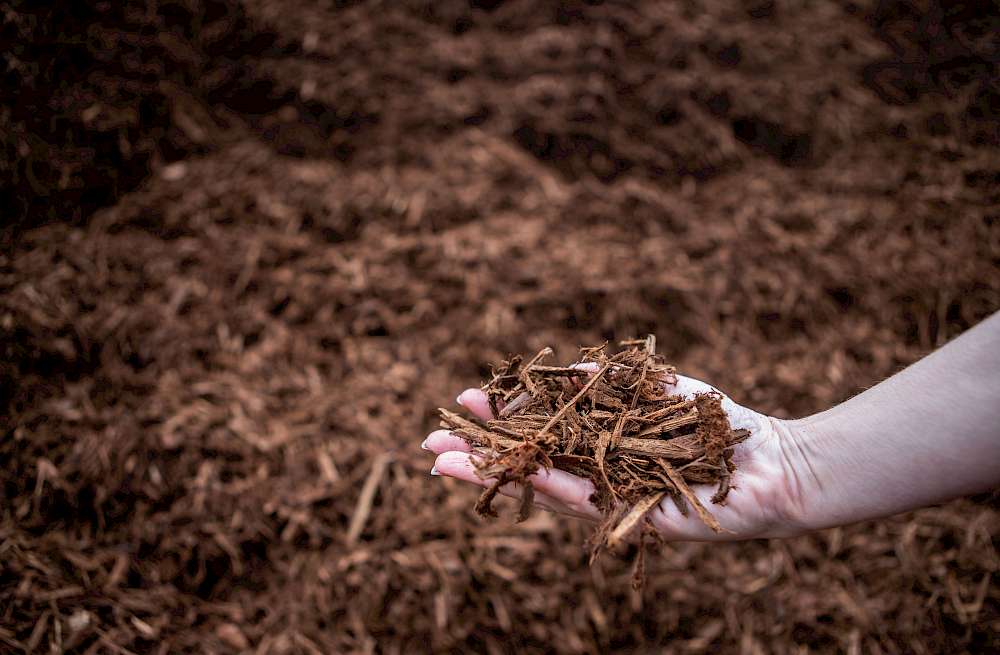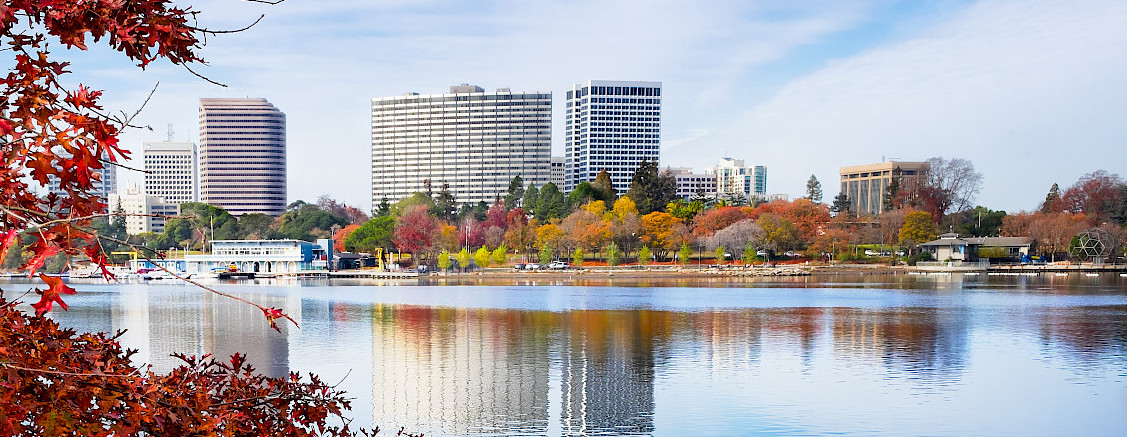
As the summer heat starts to ease off and we head into the beginning stages of fall, this is one of the best times to work on your landscape. Not only is this an important time to prepare your yard for winter, there are so many landscaping projects which thrive when begun in the fall as opposed to the summer. Here are some things to keep in mind when preparing your yard this fall.
1. Enhance Your Landscape with New Plants
September through early November is the ideal time to enhance your landscape with new plants. Whether you are adding new trees and shrubs, replacing a lawn with drought-resistant California natives, or simply sprucing up your existing landscape with cool-season annual flowers, now is the perfect time to get to work! This window of ideal planting time is past the harshest heatwaves of summer, allowing you to conserve water with your new plants, while not worrying about them wilting in the scorching sun. Additionally, you still have enough time before winter for your new plants to establish their roots before the first freezes come.
September in the Bay Area is an ideal time to plant cool-season annuals. Specifically, pansies, primrose, etc. thrive when planted around this time.
If you are trying to snag the Lawn Conversion Rebate issued by EMBUD by converting your sod lawn into California Native plants, you’ll definitely want to take advantage of the September-February planting season in order to qualify for their Super Rebate. View this helpful list of drought-resistant California native plants which thrive here in the Bay Area.
2. Transition Your Garden with “Cover Crops”
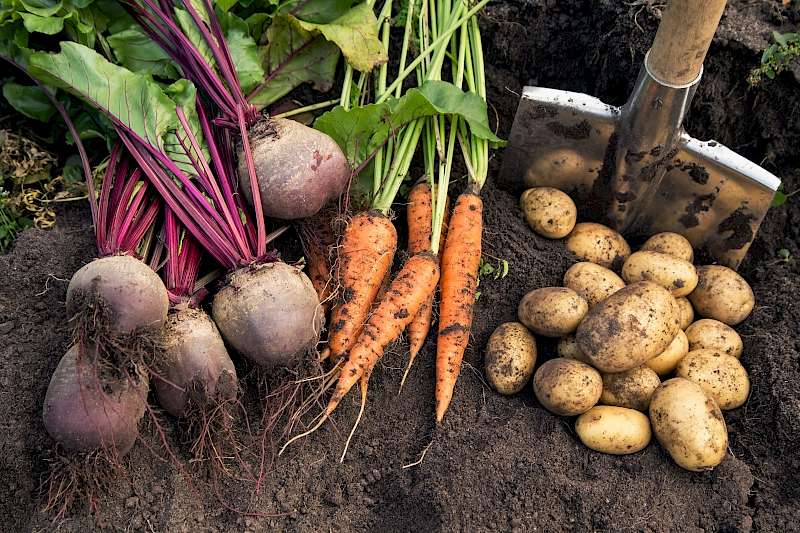
As your summer harvest in your local garden begins to phase out, consider replacing those plants with “cover crops” (sometimes called “Green Manure”). After a bountiful summer harvest season, your garden soil is likely tired. Maintaining it throughout the winter allows for a much more profitable spring planting season than if you leave it unattended all winter. Cover crops prevent weeds from growing in your garden beds during the winter. Additionally, they add nitrogen and biomass to the soil. Good cover crop seed mixes will include legumes which are especially proficient nitrogen producers, and their deep roots keep your garden soil loose all winter.
September is the ideal time to plant these so that you can enjoy their harvest throughout the winter. However, you can plant a cover crop anytime during the fall.
Alameda County Master Gardener, David Blood, provides some excellent detailed advice on transitioning to a cover crop HERE.
3. Prepare Existing Lawns for Winter
Aerate 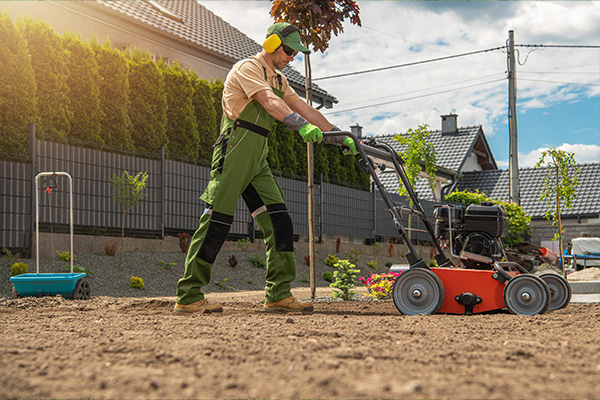
After a long summer, your lawn has likely experienced an element of heat stress and soil compaction. When your soil is in this state for an extended period of time, the roots of your lawn struggle to access the essential nutrients they need to thrive. This is the primary cause of many brown or bare patches on lawns. An easy way to prevent this and give your lawn a head start on preparing for next summer is to aerate it. Aeration is where you remove plugs of soil and grass throughout the lawn in order to allow oxygen and fresh nutrients to access its roots.
Check out our helpful, step-by-step tutorial below on how to use an aerator. You can also rent an aerator from our landscape supply yard when you are ready to begin prepping your lawn for winter.
If you aerate, be sure to fertilize shortly after, to take full advantage of your roots’ new ability to take up fresh nutrients.
Fertilize 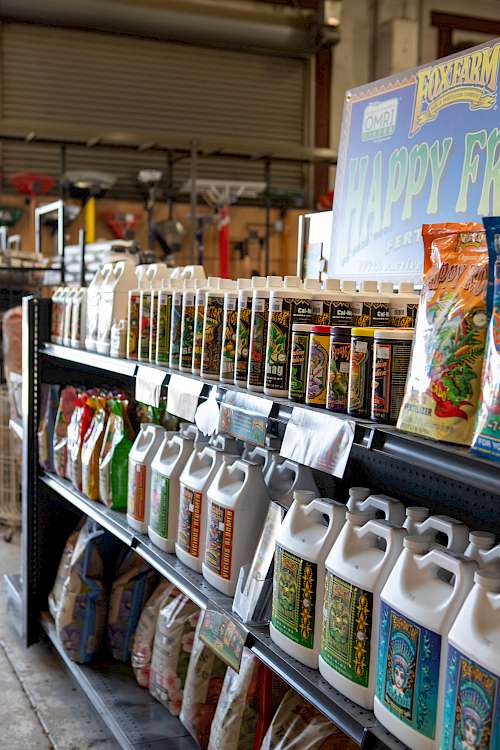
The fall season is by far the most important time of year to fertilize your lawn! If you only fertilize once a year, do it now! As the days get shorter and colder, many homeowners notice that their lawn also reaches its dormant period and grows significantly slower. However while things on the surface might seem uneventful, your lawn’s roots are continuing to grow quickly. This means that getting a boost of essential nutrients in the fall season is of utmost importance. Applying fertilizer now encourages the roots to grow deep, and store the necessary nutrients to be refreshed and healthy next spring.
Grass thrives with Nitrogen rich fertilizer. We carry a large selection of organic fertilizers to give your lawn that great head start this fall. If you have any questions regarding the right fertilizer for your lawn, our friendly and knowledgeable staff is always happy to help you!
Remove Fallen Leaves and Rake Often
Don’t wait until the end of fall to remove all of the dead leaves from your lawn. When wet, dead leaves are neglected on grass, it can suffocate your grass, rob it of essential nutrients, and create a habitat where fungal diseases thrive and damage your lawn. However, with attentive maintenance, this problem is easily eliminated.
If you notice bare patc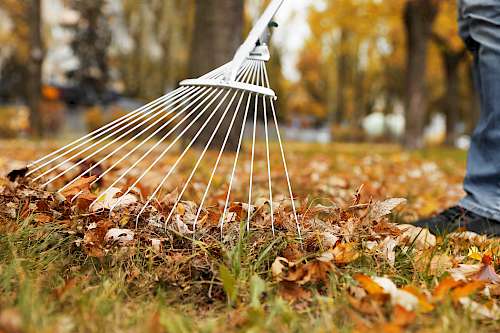 hes on your lawn after raking, loosen the soil, add Greenfield’s Grass Seed, and finish with some G&B Starter fertilizer and a layer of organic mulch. Finish by watering thoroughly–probably every other day.
hes on your lawn after raking, loosen the soil, add Greenfield’s Grass Seed, and finish with some G&B Starter fertilizer and a layer of organic mulch. Finish by watering thoroughly–probably every other day.
Pro tip: Save the leaves you rake up throughout the fall for a healthy, home-produced compost ready to use in the spring!
4. Plant Spring Blooming Bulbs
Bulbs need less water during their dormant season than in their heavy growing season through spring-summer. Additionally, by planting bulbs in September-November, your bulbs will be able to get their roots fully established during the winter months, and maintain the minimum required cold-season lasting 6-12 weeks in order to bloom in the spring. By choosing a variety of bulb species with differing blooming times, you can plan to enjoy bulbs from February all the way through June. Daffodils, Hyacinths, and grape hyacinths, are some popular options in the Bay Area. If you plant tulips, be sure to freeze them first.
5. MULCH, MULCH, MULCH!
Mulching in the fall is so valuable. Mulching insulates your plant’s roots helping protect them from the approaching cold of late fall and winter. It helps the soil retain moisture and organic matter. Plus, as mulch decomposes, it loosens clay & compacted soils and adds nutrients back to the soil.
Apply mulch around trees, plants, hillsides, and your garden. Near your plant’s roots, keep the layer of mulch around 1-3 inches, to provide just enough insulation and protection from weeds and wind, while not creating a habitat for excessive moisture collection around the roots.
We carry a wide selection of Barks and Mulches to choose from for your mulching project. Gorilla Hair is also an excellent option for wind protection and erosion control on hillsides, as well as weed prevention.
Sheet Mulching
Whether it is to convert an old lawn into a nutrient dense new resource, or add life and health to another planting area while preventing weed growth, sheet mulching is an extremely beneficial tool in your landscaping. Although sheet mulching can be done any time of year, fall is the best time to begin sheet mulching. This is because it allows for the entire winter to decompose so that when you resume planting in the spring, your soil is already prepared, weed free, and packed with nutrients.
Begin by mowing or knocking down tall weeds/grass as close to the ground as possible so that they lie flat. Leave the clippings in place as they will help add nutrients back to the soil. Soak the area with water. Then lay down a biodegradable weed block across the whole surface. Cardboard Sheets work best for this. Wet the cardboard as you go to hold it in place and make it easier to create spots in the cardboard for existing plants. Finally, layer with compost and mulch. You want about 1-2 inches of Organic Compost and 3-4 inches of mulch. In total, the organic layer on top of the cardboard should be about 5 inches of material.
These fall landscaping tips will help your yard thrive throughout the winter, and be prepared to be fully enjoyed next spring.

